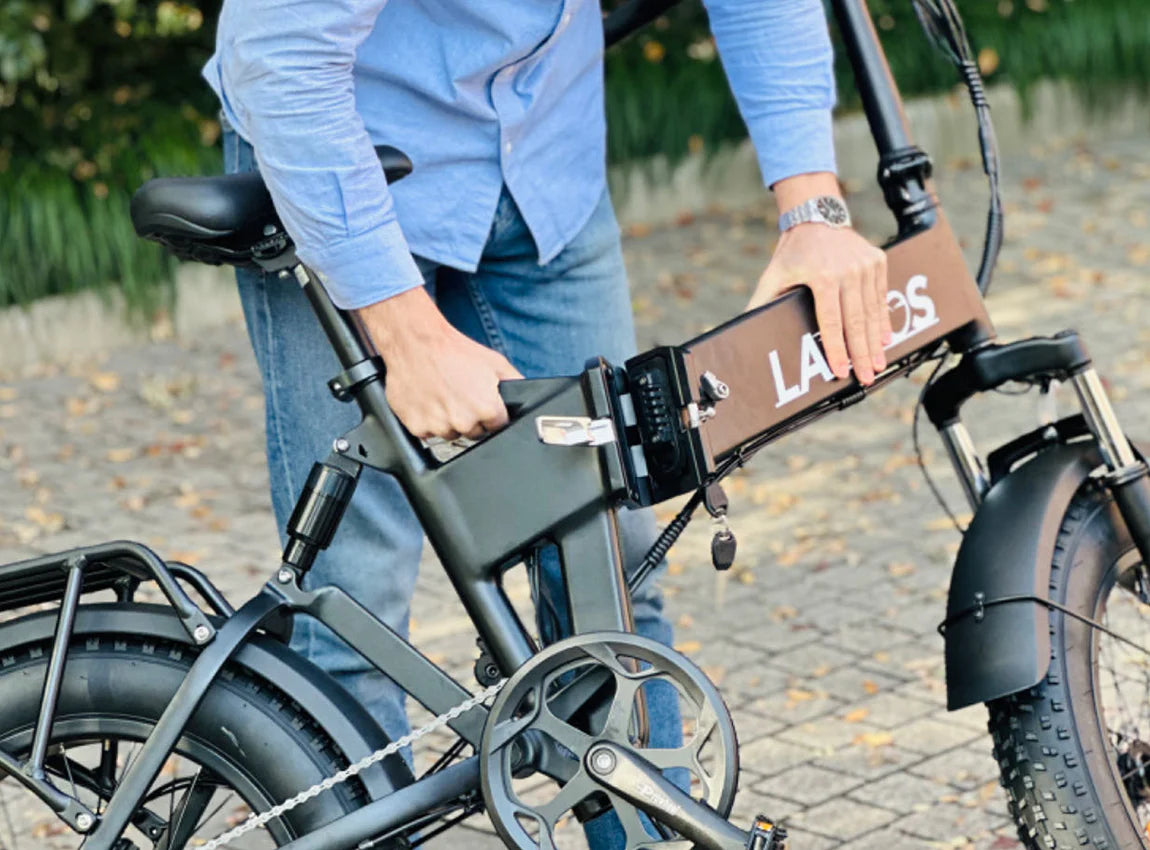E-bikes have transformed the way we move—offering speed, sustainability, and convenience in one package. But whether you’re a daily commuter or a weekend explorer, one question always comes up: how long does it take to charge an e-bike battery? Understanding your e-bike battery charge time helps you plan rides efficiently and extend your battery’s lifespan.
Why Battery Charging Time Matters for E-Bikes
Charging your e-bike battery isn’t just a matter of convenience—it directly affects performance and long-term battery health. A properly charged battery ensures consistent power delivery, longer range, and a smoother ride. Improper charging habits, such as leaving the battery at 100% for days or fully discharging it, can shorten battery life and reduce capacity over time.
How Long Should I Charge the Battery the First Time?
For lithium-ion e-bike batteries, the first charge helps balance all the cells. Most users recommend charging until the charger indicator shows a full/green light—typically 7–8 hours—rather than following older manuals that suggest 24 hours.
Key tips for first-time charging:
- Only fully charge if you plan to use the bike within a day or two.
- Avoid leaving the battery at full charge for multiple days; this can reduce battery lifespan.
- Most e-bike batteries include a Battery Management System (BMS) to prevent overcharging and help balance cells.
- Daily use can follow standard charging practices without worrying about damage, as long as you avoid prolonged full-charge idle time.
Also read: How to Charge an Ebike Battery Without a Charger

Key Factors That Affect E-Bike Battery Charge
Several elements determine how long your e-bike battery takes to charge:
- Battery capacity (Ah or Wh): Larger batteries naturally take longer to recharge.
- Charger amperage: A higher-amp charger delivers current faster, reducing charge time.
- Battery chemistry and age: Older or heavily used batteries may charge more slowly.
- Temperature: Charging in extreme cold or heat can slow the process or damage cells.
In general, most standard lithium-ion e-bike batteries take 3 to 6 hours to reach a full charge.
Average Charging Time for Different E-Bike Batteries
A simple rule of thumb: divide your battery's amp-hour (Ah) rating by the charger’s amp output. For example, a 10Ah battery with a 2A charger takes roughly five hours to charge.
- Small city e-bikes (250–400Wh): about 3 hours.
- Mid-range commuter bikes (400–700Wh): around 4–6 hours.
- High-performance mountain e-bikes (700Wh+): 6–8 hours.
Fast chargers can cut typical e-bike battery charge time by up to 50%, but always confirm compatibility before use.
Also read: Guide to Storing Electric Bike Batteries Safely and Effectively
E-Bike Battery Capacity and Charger Amperage Explained
Think of your battery as a fuel tank and your charger as the pump. A bigger tank (watt-hours) holds more energy, and a stronger pump (higher amperage) fills it faster. Using a charger with higher-than-recommended amperage can cause overheating or damage—always follow manufacturer guidelines to ensure safe e-bike battery charging.
Step-by-Step Guide: How to Charge an Electric Bike Properly
- Turn off the e-bike before plugging it in.
- Connect the charger to the battery first, then plug the charger into the wall outlet.
- Avoid charging immediately after riding—let the battery cool down.
- Charge in a dry, room-temperature location.
- Unplug the charger once full to prevent unnecessary extended charging.
Following these steps ensures safe and efficient e-bike battery charging while improving battery lifespan.
How Long an E-Bike Battery Lasts (Charging Cycles & Lifespan)
Most e-bike batteries are rated for 500–1,000 full charge cycles. The Lacros models specifically are rated for 600 charge cycles. A cycle means one full discharge and recharge. To maximize battery life:
- Avoid draining completely.
- Store half-charged if unused for weeks.
- Avoid extreme temperatures.
- For regular use, keeping the battery between 20–90% can extend battery life significantly.
- Full 100% charges can be done occasionally (for example, once a month) to help balance cells.
Tips to Charge Your E-Bike Safely and Extend Battery Life
- Charge regularly: don’t wait until the battery is empty.
- Avoid extreme heat or cold: ideal charging temperature is 10–25°C (50–77°F).
- Don’t leave plugged in for days: most chargers stop automatically, but unplugging is preferred.
- Clean contacts occasionally: dust or moisture can reduce charging efficiency.
These habits help maintain consistent e-bike battery charge and improve performance.
Common Charging Mistakes to Avoid
- Using the wrong charger or voltage adapter.
- Leaving the battery connected while transporting the bike.
- Charging in direct sunlight or damp conditions.
- Ignoring signs of slow charging or overheating.
Avoiding these mistakes prevents safety hazards and ensures reliable e-bike battery charging.
Lacros-Certified E-Bikes and Batteries
All Lacros e-bikes use high-quality Samsung cells, ensuring reliable charging, long lifespan, and consistent performance.
- Thunder & Cyclone: 48V 20Ah Li-ion packs, SAMSUNG 21700 cells — ~6–7 hours to full charge.
- Pinecone: 48V 12.8Ah Li-ion pack, SAMSUNG 21700 cells — typically 6–7 hours to full charge.
- All three models are rated for 600 charge cycles and tested to meet international safety standards.
If you’re looking for a reliable e-bike with durable batteries and consistent performance, explore the Lacros lineup: Discover your next ride here.
Conclusion
Proper e-bike battery charging habits help keep your battery healthy and performing at its best. For first-time charging, a full charge helps balance cells; regular use between 20–90% of capacity maximizes lifespan. Follow simple care tips to enjoy longer battery life, safer rides, and consistent performance every day.





Share:
Are Ebikes Considered Motorized?
Are Electric Bikes Allowed on Rail Trails?